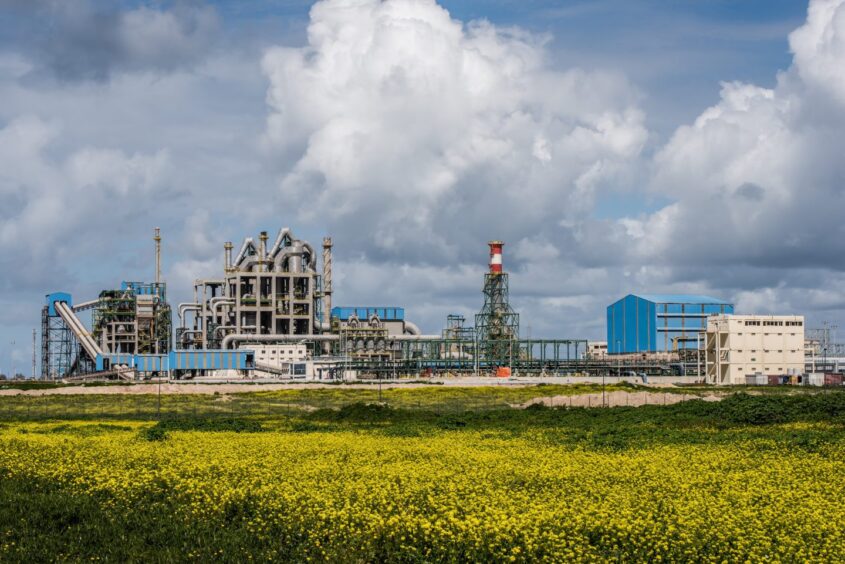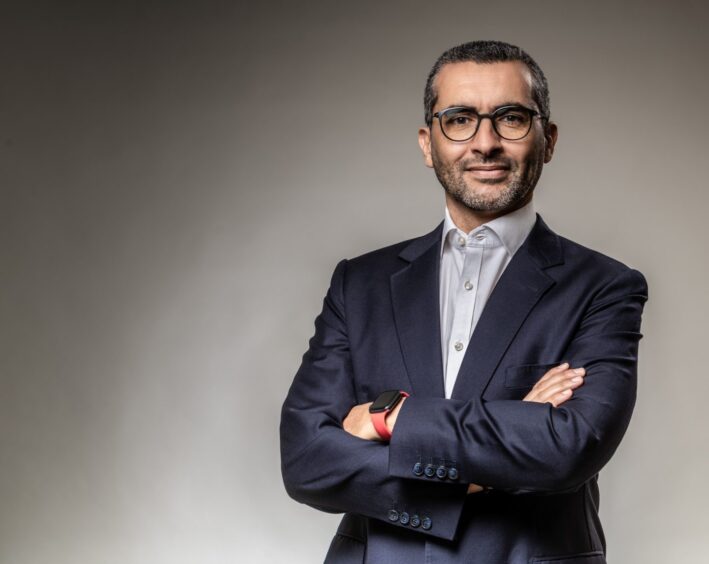
Now that the hype around hydrogen is dying down, projects with a clearer eye on commerciality are coming to the fore – and fertiliser production presents one such opportunity.
Morocco’s OCP Group consumes substantial amounts of ammonia in order to produce its fertiliser. The company has grand plans, involving a $13 billion capital expenditure, to ramp up renewable energy production and green hydrogen.
The company consumed around 1.6 million tonnes of ammonia in 2019. Spending on ammonia in 2021 accounted for around 21% of its purchases that year. It is also a substantial electricity consumer, at around 4 TWH, or 10% of Morocco’s total consumption.
The aim, OCP head of corporate strategy Iliass El Fali said, was to be “as green as possible. We’ve committed to carbon neutrality, scope 1 and 2, by 2030, and scope 3 by 2040. Part of this commitment to ensure carbon neutrality will be to consume green ammonia. We are the largest ammonia importer in the world accounting for roughly 10% of global trade.”
OCP has recently completed a period of growth, where it tripled its fertiliser capacity with an $8bn programme, over 10 years. “We’re now launching a new phase, with $13bn of capex, which began last year. This will scale up our sustainability agenda.”
In addition to investing in renewables and electrolysis, OCP also aims to produce its own desalinated water.
Managing volatility
In 2022, El Fali explained to Energy Voice, imports cost $1.9bn. Furthermore, costs varied wildly for grey ammonia. At one point it reached $1,200 per tonne, before dropping to $300 and is currently around $600.
“Today, green ammonia is still more expensive than grey, at around $700 per tonne. But using domestically produced green ammonia could act as a sort of hedge and costs will come down. It will be around $400-450 per tonne in 2035,” El Fali said.
Furthermore, grey ammonia costs do not include any carbon prices, which may become more important when bearing in mind factors such as the Carbon Border Adjustment Mechanism (CBAM).
OCP is investing in start ups and research partnerships in order to drive down costs.
“There will be bottlenecks, in solar, electrolysis, wind turbines and so on. But there’s a first mover advantage. If we start first, we can build solid partnerships to help meet our needs and support transition in the region. The focus us to engage with partners and technology. This scale up is an opportunity. We’re open to discussions.”
Domestic production
OCP has not built up domestic grey ammonia production capacity, because Morocco lacks access to gas resources. As a result of the war in Ukraine, Morocco – and OCP’s – needs were highlighted.
“It was hard to find ammonia at certain periods,” the OCP executive said. “We see integration with green ammonia production as a way to secure sourcing – and eventually become autonomous.”
OCP aims to produce 200,000 tonnes per year of green ammonia by 2026. It will increase this to 1mn tpy in 2027 and then reach 3mn tpy by 2032.
The company’s first project, to produce the first 1mn tpy, is in Tarfaya, on the western coast. The site will hold 4 GW of renewable energy, anchoring a new industrial zone and port.
“It’s offgrid and integrated,” El Fali said, “the land is secured – around 100,000 hectares – and there’s no constraint on development.”
OCP is in the process of feasibility studies at Tarfaya and it expects to reach a final investment decision (FID) by the end of 2024 and start producing in late 2027. “It’s aggressive, but we don’t see any hurdles on the path.”
OCP’s plans are large scale, El Fali acknowledged, but said these were not “exceptional” when taking into account the company’s history.
“The idea is that, when it comes to green hydrogen, scale matters. We need to speed up the ramp up of production and so we are exploring partnerships, while ensuring alignment on strategic objectives. We are looking for partners willing to invest in the value chain.”
State support
Morocco has set out its plans to scale up renewable energy consumption, targeting 52% of demand by 2030. The country’s onshore wind resource in the south is comparable to offshore, El Fali continued, with 70-75% capacity. Meanwhile, it has solar radiance double that of Europe.
Hydrogen can offer an opportunity to decarbonise, but also drive further growth.
The state is expected to publish the “Morocco Offer” within a few weeks, setting out the framework and incentives it will put in place. Morocco owns a 94% stake in OCP.
One potential area of growth, the OCP official noted, was a hydrogen pipeline into Europe.
El Fali was speaking the week that COP28 begins in Dubai. OCP intends to deliver a message to the meeting that business has a part to play, “but the main point is that we are not in a waiting mode”.
If there was a place where OCP saw scope for broader support in developing the sector, it was in helping bridge the contracting gap for hydrogen.
Offtakers expect prices to fall, perhaps by 50% in 10 years, which has put them off signing contracts for green hydrogen. However, without demand certainty, projects are struggling to move ahead.
“The risk needs to be covered,” El Fali said. “We think that governments and policy makers will have to solve this issue. They need to give the right incentives to industry. This is what makes our position unique, we have the demand to make it work, so we can be one of the first movers.”
Recommended for you


 © Supplied by OCP Group
© Supplied by OCP Group